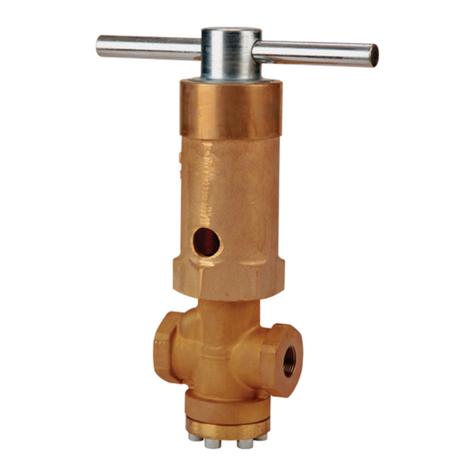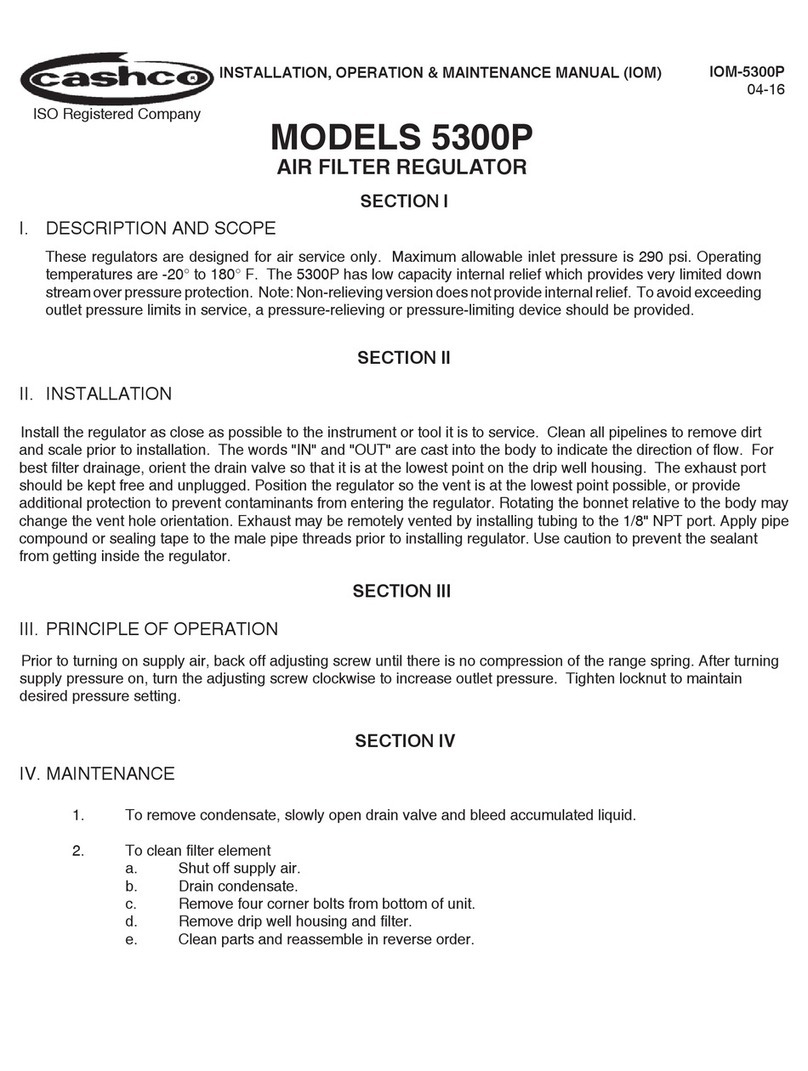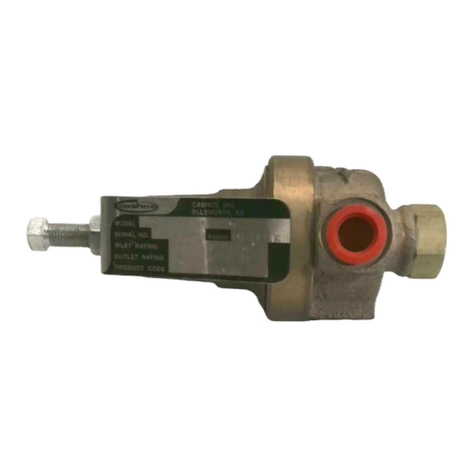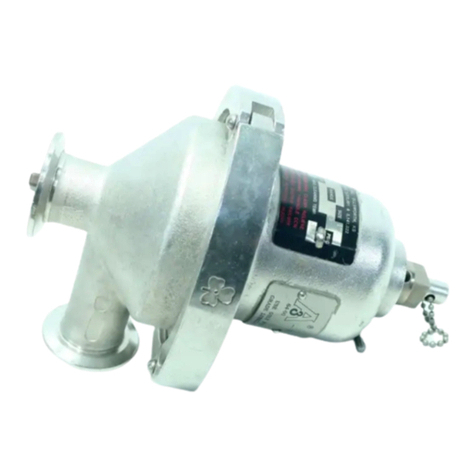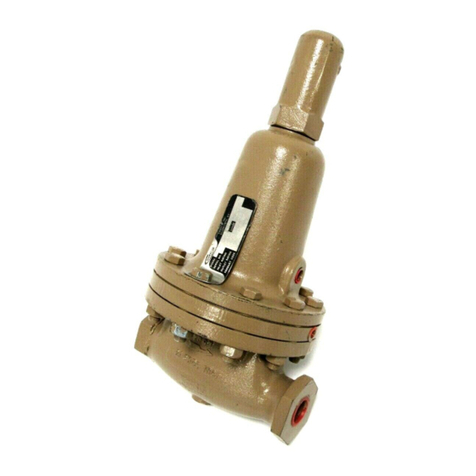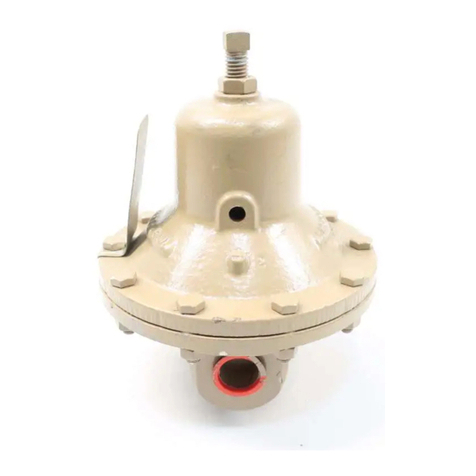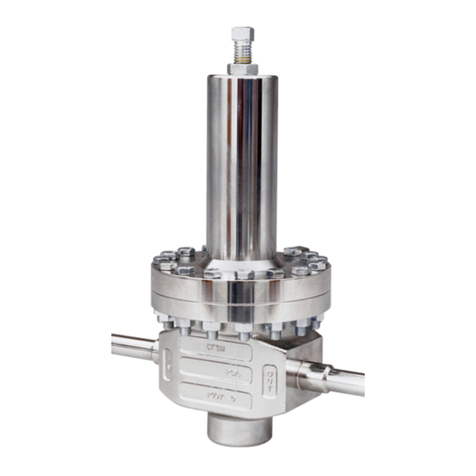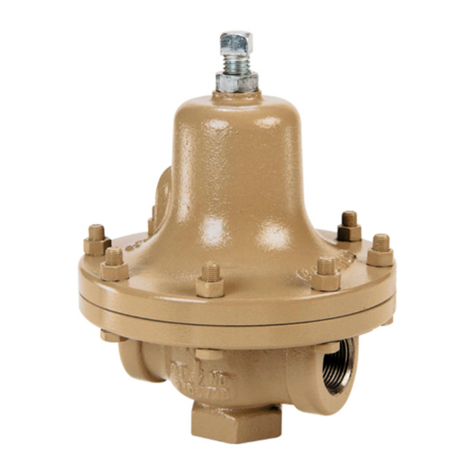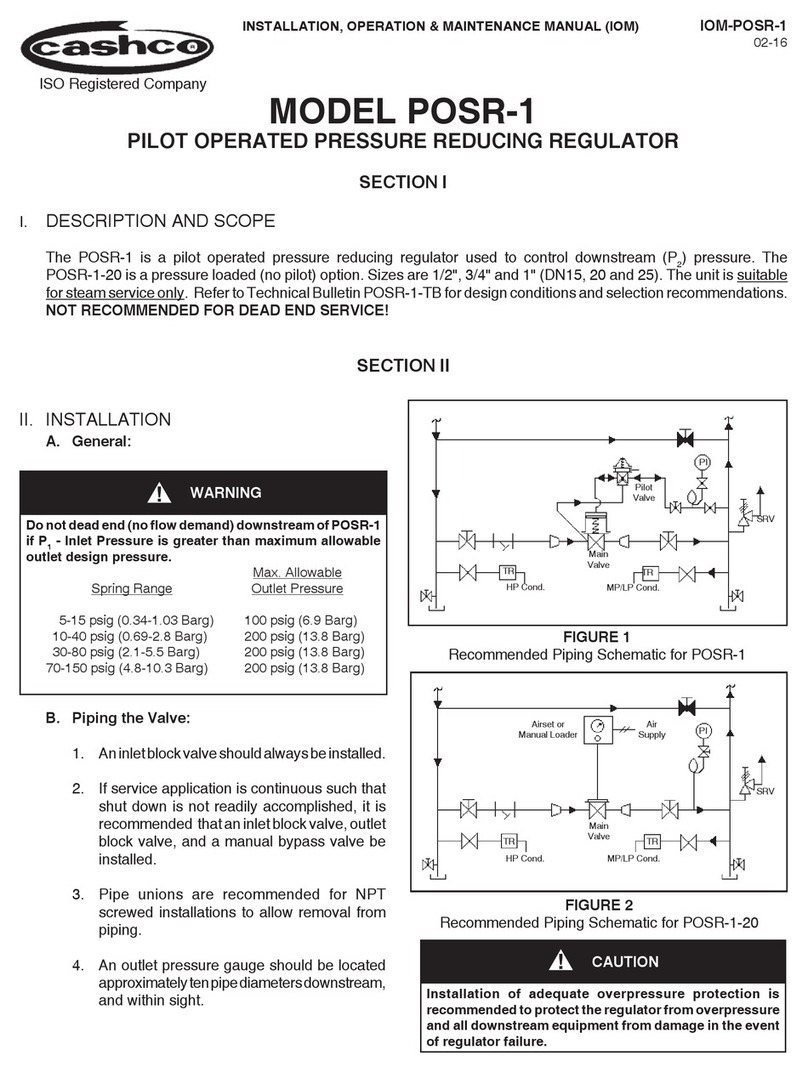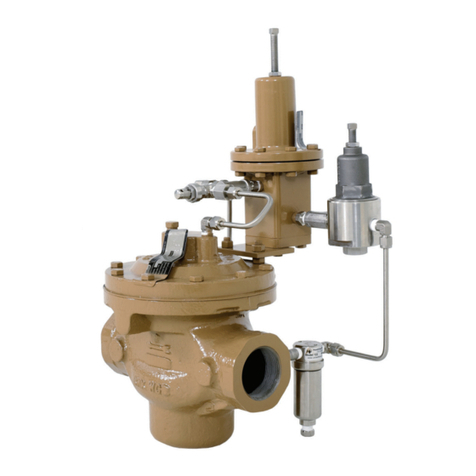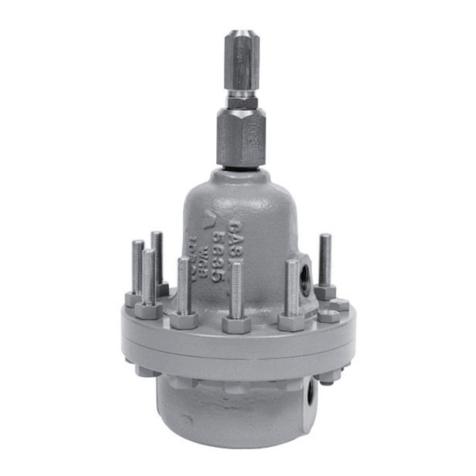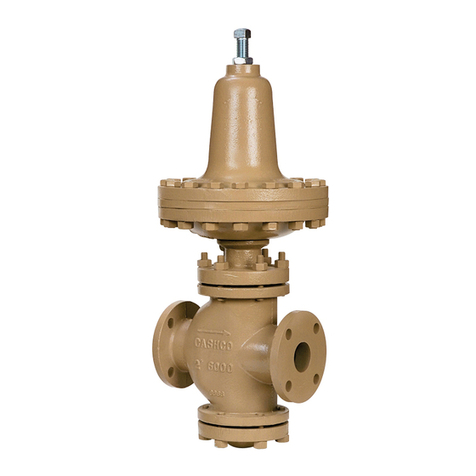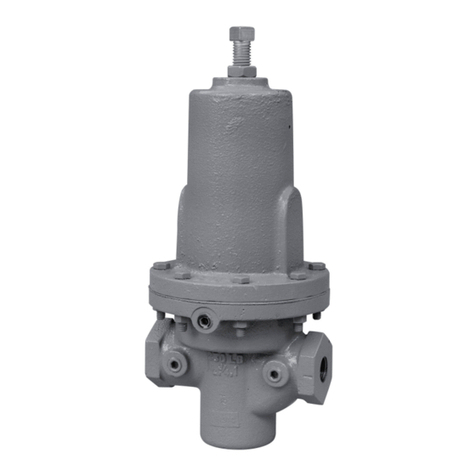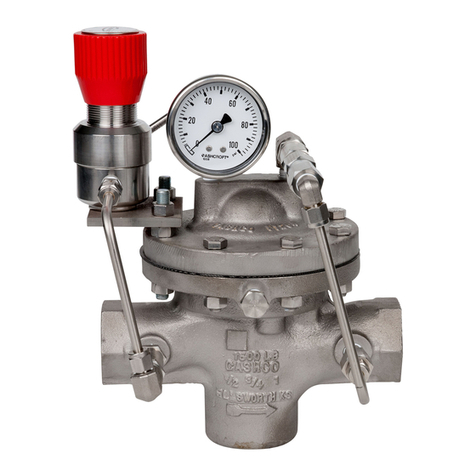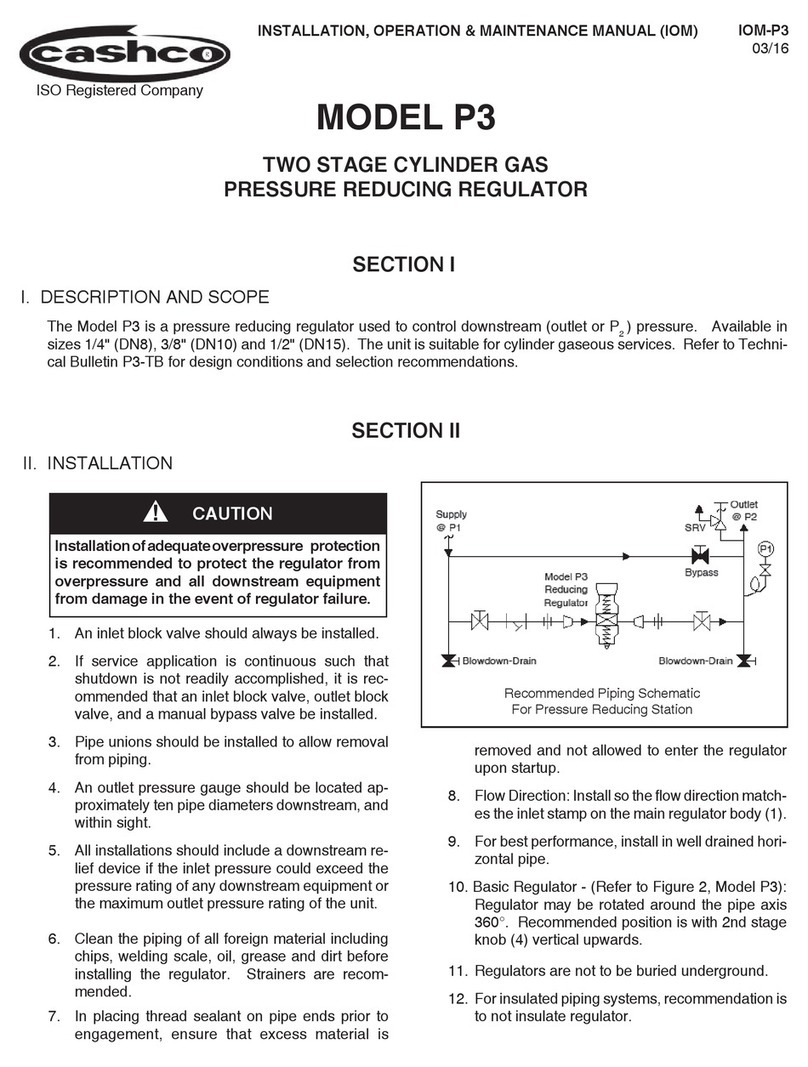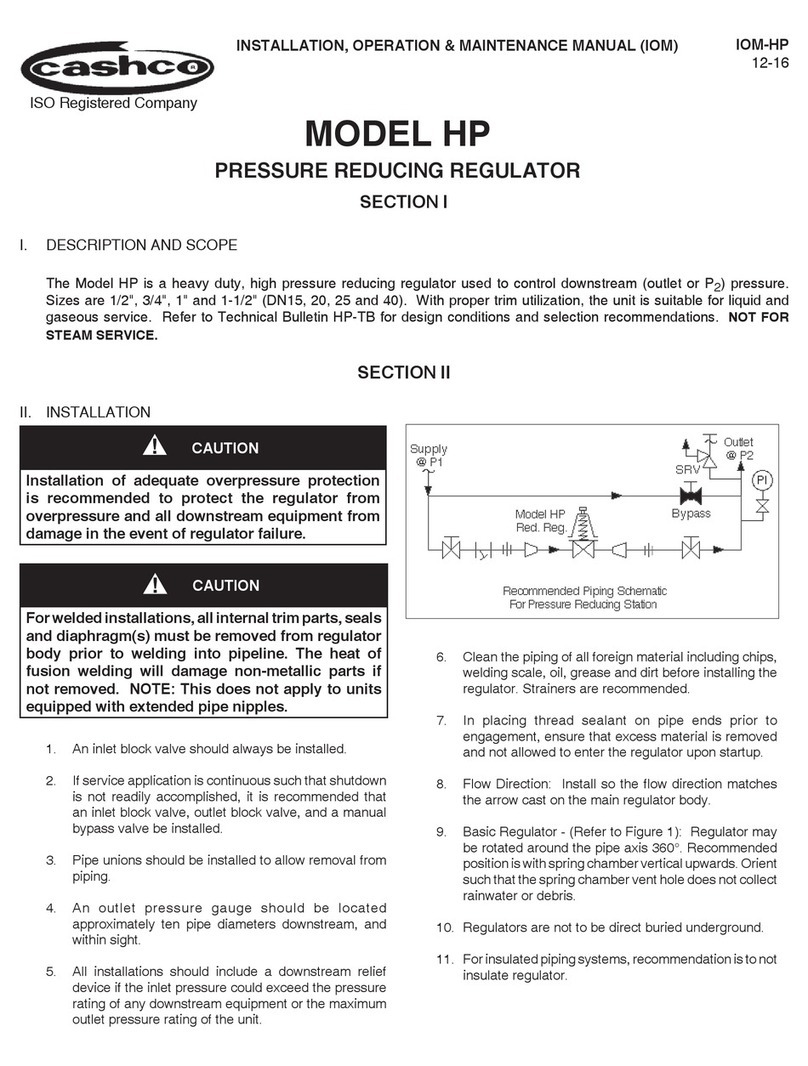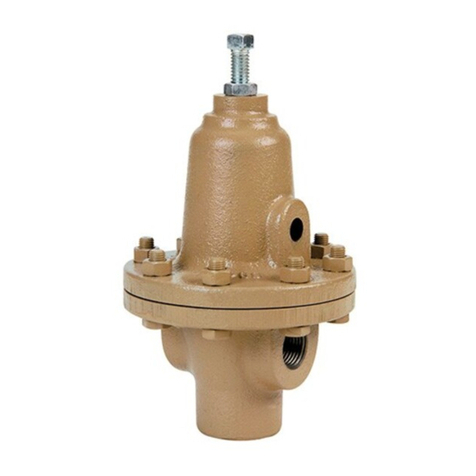
IOM-764P / PD 5
Do not rotate the needle valve (3) CW beyond this
location as the unit will be rendered inoperative.
Rotate needle valve (3) CCW approximately 1/8 of
a revolution increments at each adjustment. 1-1/2
revolutions are the maximum rotation available
from the 3 percent minimum PB position to the
20% maximum PB position.
SECTION IV
IV. STARTUP
1. Prior to pressurizing through the airset, disconnect
the instrument air supply (IAS) at the airset inlet,
open the IAS block valve and blow the piping clear
of any debris. Reconnect the piping and open the
isolation valve. Set the airset to 18 psig (1.2 Barg).
2. The unit is shipped with the proportional band
(PB) set at a minimum value of approximately 3
percent. Matchmarks are factory placed on the
housing (1) and the PB needle valve (3) head
approximately perpendicular to the screwdriver
slot of the needle valve (3) head.
4. Start the process, observing the output gauge of
the controller and the process pressure gauge.
(For 764PD's, always pressure the HIGH pressure
before the LOW pressure.) Assure that the output
is changing (decreasing from 18 psig (1.2 Barg)
if reverse acting, or increasing from 0 psig (0.0
Barg) is direct acting) as the controller approaches
setpoint. Confirm proper action of control valve.
Vary the process flow and observe the reaction
of the controller to the disturbances.
5. If the controller seems to be “hunting” with
overshoot and undershoot of setpoint, additional
PB should be added. Rotate the needle valve
(3) CCW in increments of 1/8 revolution. NOTE:
When PB is adjusted, setpoint will normally require
slight resetting; rotate the adjusting screw (2.3) as
required. Repeat until best stability is obtained, or
up to the maximum of 1-1/2 revolutions.
3. Units are factory calibrated to approximately mid-
range; i.e. 50-150 psig (3.4-10.3 Barg) range will
have setpoint at approximately 100 psig (6.9 Barg).
It is recommended that the unit be field calibrated
following installation and prior to startup. (See
Section VI. CALIBRATION for detailed procedure.)
Direct Action: Adjust setpoint by rotating
adjusting screw CCW to decrease setpoint or turn
CW to increase setpoint.
Reverse Action: Adjust setpoint by rotating
adjusting screw CW to decrease setpoint or turn
CCW to increase setpoint.
Always make adjustments in small increments and
wait until reactions can be observed before making
further adjustments.
6. If “hunting” persists after comple
tion of Step 5, the
controller can be slowed down by reducing airset
supply pressure down to 16 psig (1.1 Barg) in 1 psi
(0.07 Bar) increments. If this procedure is used,
repeat Step 5.
7. If “hunting” persists after completion of Step 6,
rotate the needle valve on the sensing line “towards
closed” to provide “snubbing” action. DO NOT
FULLY CLOSE SENSING NEEDLE VALVE.
SECTION V
V. MAINTENANCE
A. General:
1. Refer to Figure 12 for basic pressure controller.
Refer to Figure 13 for differential pressure
controller.
2. Maintenance procedures hereinafter are
based on removal from the process piping
system where installed. When removing the
tubing, put a tag on the tubing which port, “A”
or “B”, was utilized.
3. If complete overhaul is undertaken, it is
recommended that the pneumatic circuit
overhaul be completed prior to diaphragm
replacement.
4. Lightly grease all sensor sub-assembly (2)
O-rings (5) (6) upon replacement with lithium
grease; cloth wipe all excess grease.
B. Diaphragm Replacement:
1. If diaphragm (12) has cracked and leaked,
complete unit must be overhauled including
the pneumatic circuit portion.
CAUTION
CAUTION


